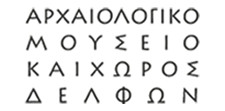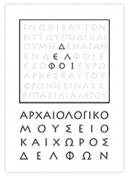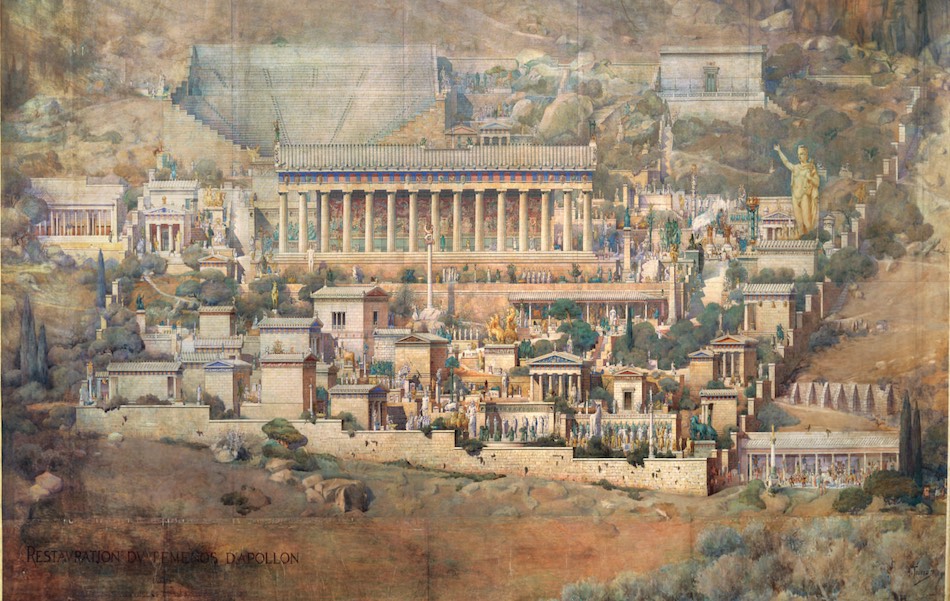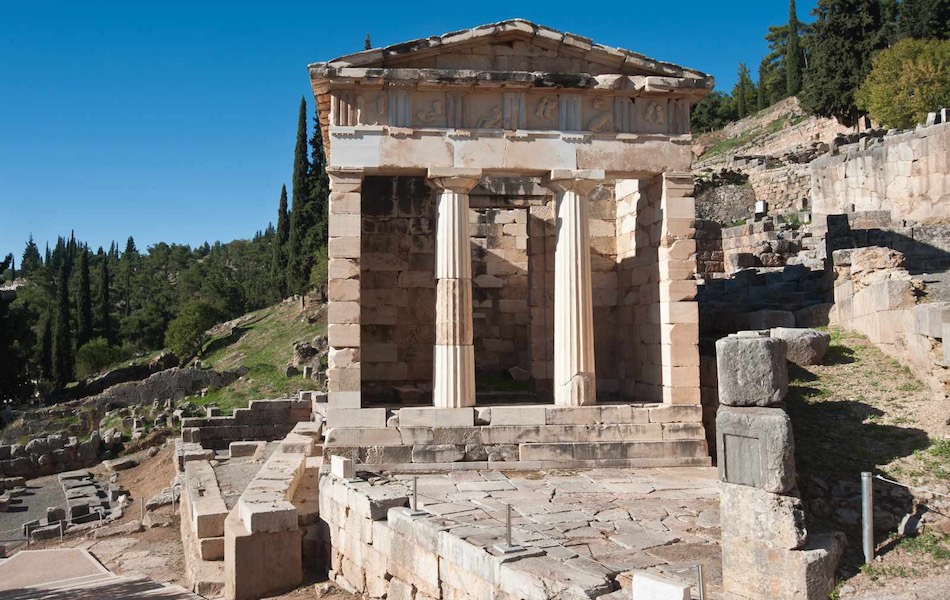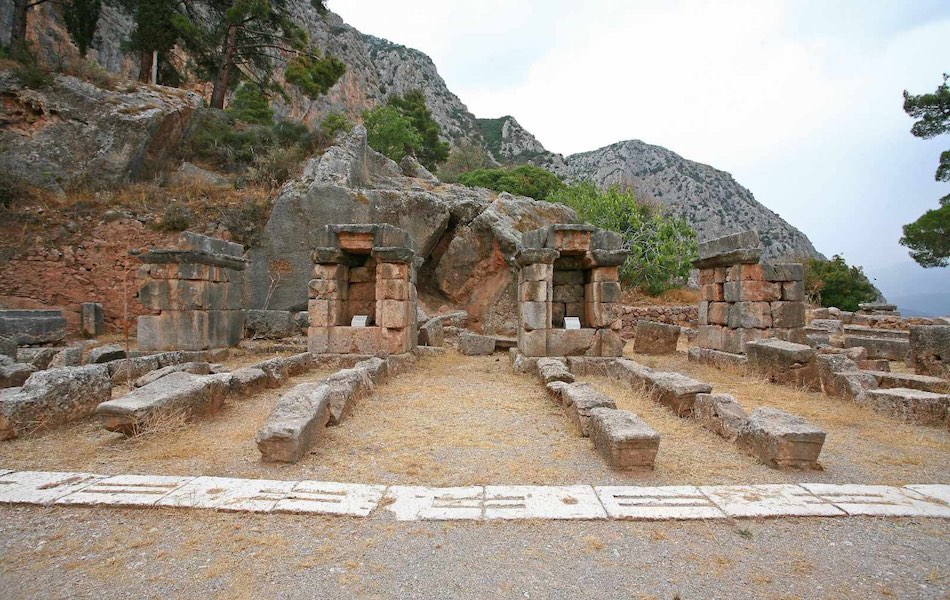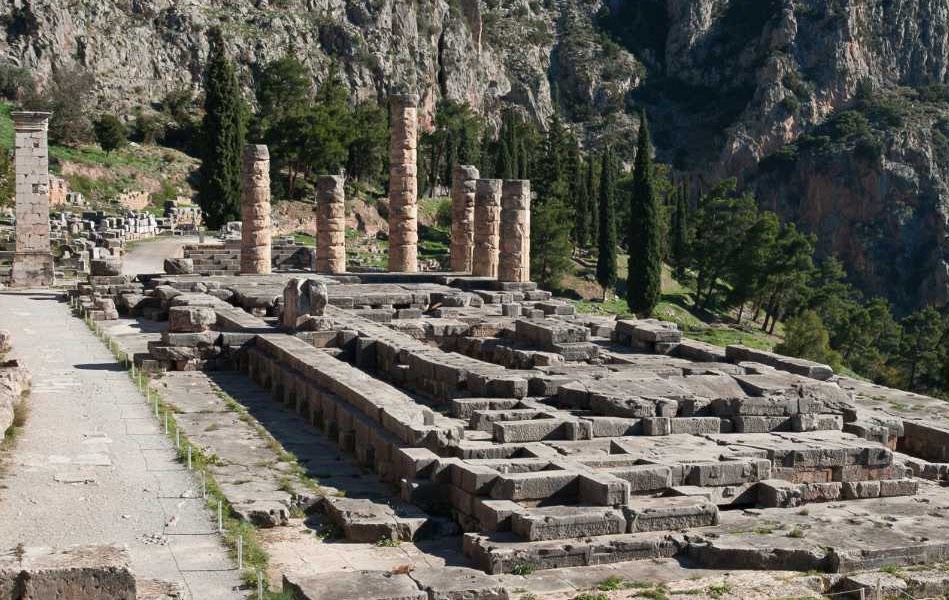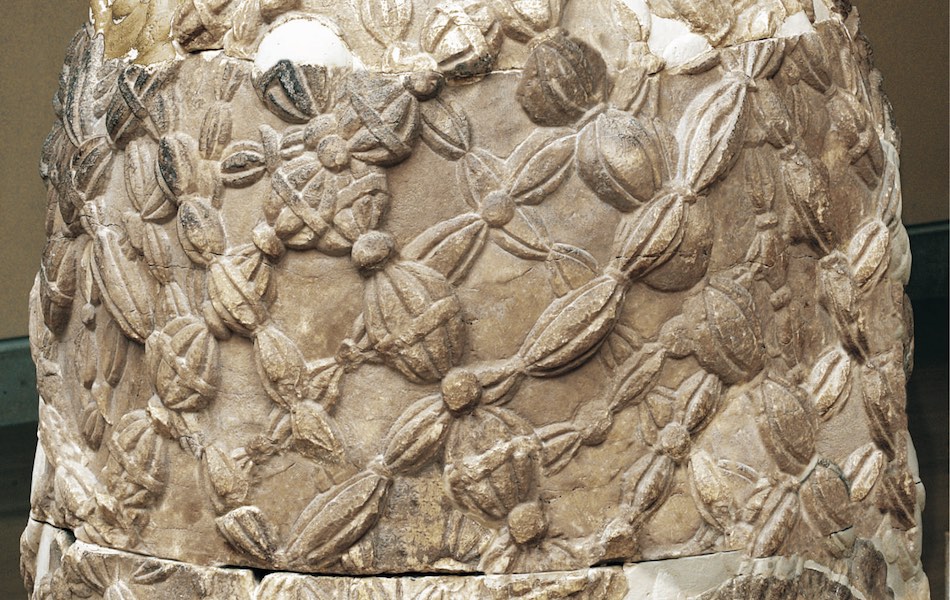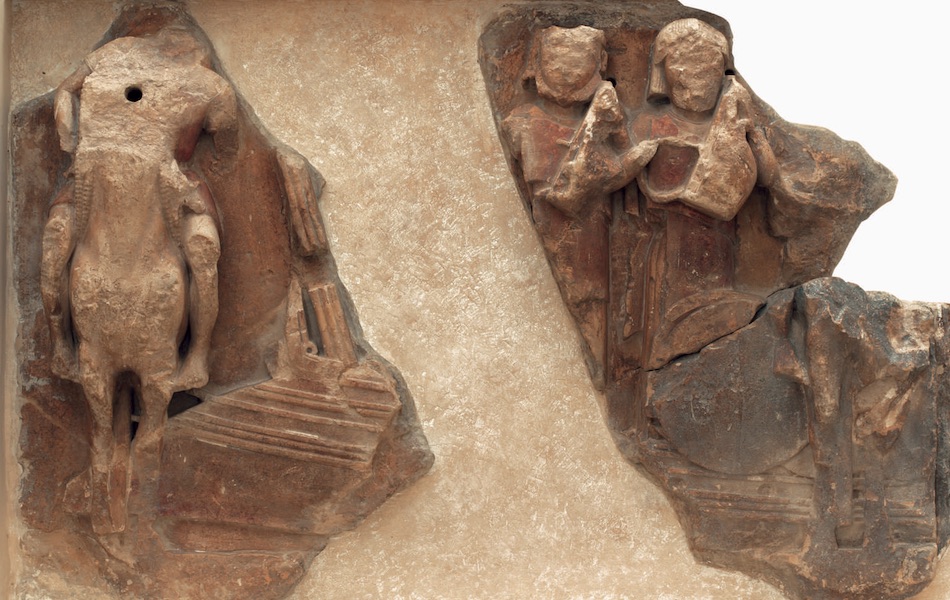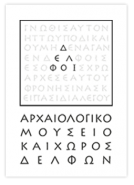The Siphnian Treasury
Summary
The treasury of the Siphnians is a magnificent example of the Ionic order. It is distyle in antis, with caryatids instead of columns on the vestibule. The building is richly decorated with painted sculptures in relief, particularly on the frieze which depicts scenes inspired by the Trojan War.
Description
- The treasury of the Siphnians is the first building constructed entirely out of marble on mainland Greece. It was built in ca. 530-525 B.C. using three different kinds of marble: Siphnian for the walls, Naxian for the entablature and the mutules, and Parian for the architrave and the sculpted decoration. According to Herodotus and Pausanias, the Siphnians had acquired great wealth thanks to their mines, and decided to offer to Apollo the tithe of their profits by building this lavish treasury.
The building was distyle in antis, built on a tall limestone crepis measuring 6.04 x 8.41 meters. It is probably the best conserved specimen of an Ionian treasury with rich sculpted and coloured decoration. On the prostasis two caryatids stood in the place of columns, one of which is still extant. The caryatids stood on tall bases and supported a kalathos (a kind of tall hat) and a capital, both richly decorated in relief.
The entablature was 1.57 meters high in total and was elaborately decorated with bands bearing astragals, palmettes, rosettes, lotus flowers and lion heads on the perimeter of the roof. The masterpiece of the treasury was the frieze depicting a battle between Greeks and Trojans on the east side, a Gigantomachy on the north side, whereas from the west side only a few slabs have been preserved, indicating that it possibly depicted the judgment of Paris; finally, only a few remains of the south side are extant, from which one can imagine that it probably depicted women being captured, possibly the Leucippides who had been abducted by the Dioscouroi. The pediment over the façade of the treasury depicted Zeus attempting to prevent Hercules from stealing the tripod; the second pediment is not extant. The roof was made of marble and the gutter ended up in lion heads. The pediment was crowned by three acroteria, of which the central one depicted a Sphinx and the other two Victories (Nike). The entire sculpted decoration was painted over with intensive blue, red, gold and green.
On various parts of the walls, there are inscriptions which date between the 2nd century B.C and the 2nd century A.D., mentioning cities of Asia Minor. The monument stood unscathed until the final abandonment of Delphi, which explains its preservation in such a good condition.
MUSEUM OF DELPHI
